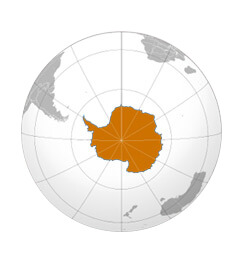“Where comes this strange attraction to the polar regions, so powerful, so tenacious, that once income we forget the moral and physical fatigue and thought only of returning to them? Where comes the incredible charm of these regions yet deserted and terrifying? Is it the pleasure of the unknown, the thrill of the fight and effort to get there and live there, the pride and try to do what others do not, the sweetness of being far pettiness and meanness? A little of this, but something else too. I thought for a long time I would feel more strongly, in this desolation and death, pleasure of my own life. But I feel that these regions today strike us, in some way, a religious imprint. Under temperate or equatorial latitudes, Nature has provided its effort; in a swarm of plant and animal life, everything is born, grows and multiplies and dies to lead to reproduction, to ensure the perpetuity of life. Here is the sanctuary of sanctuaries, where Nature is revealed in his mighty power as the Egyptian deity who take refuge in the darkness and silence of the temple, away from everything, away from life, however, it creates and governs. (…) The man who was able to enter this place feels his soul rises”.
Excerpt from the book Le Français au Pôle Sud, written by Jean-Baptiste Charcot.

Antarctica program suggestions
Antarctica at a glance
- Area: 14 million km² or an area 1.3 times larger than Europe …. 98% of its surface is covered with a layer of ice with an average thickness of 1600 meters
- Population (approx.): 1,500 inhabitants but no permanent population.
- Economy: The Antarctic Treaty gives the continent its unique status for science, peaceful actions, preservation of natural resources and protection of biodiversity. The exploitation of mineral resources conducted for scientific purposes are carried out by more than 4,000 scientists of many nationalities and with different interests. It is on this witness continent that we examine, among other things, the cause of climate change. Alone Lake Vostok contains 400,000 years climatology. Considered as a nature reserve, the continent is protected by the Convention on the conservation of flora and fauna of Antarctic Marine Living Resources (CCAMLR) and various international agreements on the protection of biodiversity and the tourism restriction. The International Association of Antarctic Tour Operators (IAATO), representing 80% of tour operators operating on the continent, has established a code of conduct and promotes tourism education and cooperates with scientists by providing them with services and logistics transport.
- Have read, seen and heard: (read) Le Français au Pôle Sud by Jean Baptiste Charcot and Glaces de l’Antarctique, une mémoire, des passions by Claude Lorius, (read) Le Sphinx des glaces by Jules Verne and The heart of the Antarctic by Sir Ernest Shackleton, (seen) the beautiful documentary film La marche de l’Empereur directed by Luc Jacquet, (heard) the silence of the ice …
- To read, see and hear these days : (read) White by Marie Darrieussecq and the latest edition Adieu l’Antarctique by Paul-Emile Victor with a preface by his son Jean-Christophe, and a beautiful book, illustrated with beautiful photos, of Lucia Simion preface by Jean-Louis Etienne Antarctique, Cœur blanc de la Terre, (read) and follow the articles to be published following the recent discovery of Argentine paleontologists in Antarctica: a penguin who reached two meters high and older than 34 million years,(see) the fabulous scenery filmed in this funny road book on a pseudo Antarctic expedition 12 gentlemen en Antarctique, (listen) the roar of ice blocks that stand …
